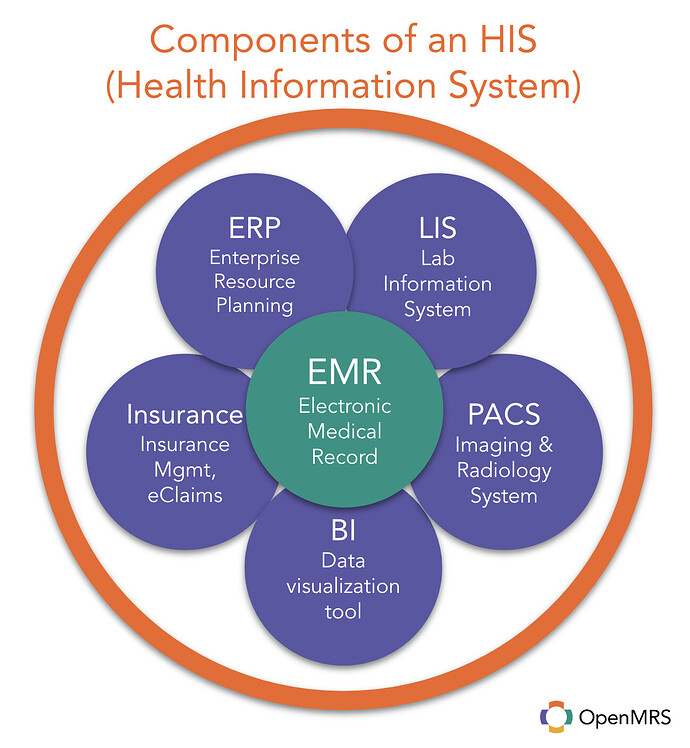Hi all,
There have been numerous discussions recently across multiple groups about the need for OpenMRS to better support the digitization of primary healthcare service delivery (mostly OPD). In healthcare settings, this quickly translates into OpenMRS being able to integrate better or more easily with various other systems, such as billing, reporting, lab, PACS, and many others.
The key question is: how can we, as a community, help adopters and implementers integrate OpenMRS and leverage interoperability standards in the process?
The problem
Integrating OpenMRS with other systems has always been challenging. However, because it mostly falls outside our core focus (the EMR system itself, OpenMRS), implementers have been left to devise their own solutions, often from scratch. This has resulted in numerous independent or weakly coordinated efforts, all tackling similar issues and recreating similar solutions with varying degrees of success. While we acknowledge that integrations can be somewhat idiosyncratic, we would still like to propose a pathway to help implementers jump-start the technical challenges of integrating OpenMRS with other systems.
What are we proposing?
Our proposal consists of providing a sample software distribution in which OpenMRS is already integrated out of the box with several other systems. The priorities are still being discussed, but the initial focus will likely be on integrating OpenMRS with billing and stock inventory management systems. Other examples that we would like to include in this sample integrated software distribution could see OpenMRS being integrated with a LIMS.
Much like the OpenMRS Distro Ref App provides a starting point for implementers with an EMR system, we aim to publish an OpenMRS Distro ‘sample integrated HIS’ to offer a foundational, integrated system for them to start with. This system will be ready to be adapted, configured, and expanded to meet specific needs.
In practice
Practically, we would like to introduce a new repository to host this upcoming integrated distro of OpenMRS. Our early thinking suggests the following:
- Rename
openmrs-distro-referenceapplicationasopenmrs-distro. - Introduce a new repository:
openmrs-distro-his.
(Please note that all names are early suggestions to get the discussion going.)
The former, point 1, is optional and can be discarded; we just believe that openmrs-distro might be a better name to designate the core reference OpenMRS distro released by our community for implementers to start with an EMR system.
The latter, point 2, summarizes the core of our proposal. We would add a new repository to host openmrs-distro-his, a sample or reference software distribution that would depend on our OpenMRS Distro Ref App and would repackage it within a wider health information system (HIS).
Your opinion matters – please share it!
We look forward to your feedback and input on this important topic. Why not take it first to the next TAC call and start brainstorming together?
- What do you think about introducing a sample HIS software distribution to guide implementers?
- Would you welcome and even help our community to maintain such a distribution?
- How should we name it?
- Should it be hosted in a new separate repository or within the current Ref App one?
- Which business domain systems should we start with? ERP, LIMS, PACS, BI, etc.?
- In each business domain, which sample software would we showcase as part of our new HIS distro?
- …
Let us know what you think!
Cc: @AMPATH @Mekom @METS @OpenMRSInc @PalladiumKenya @PIH @Sonder @UCSF @UWash
